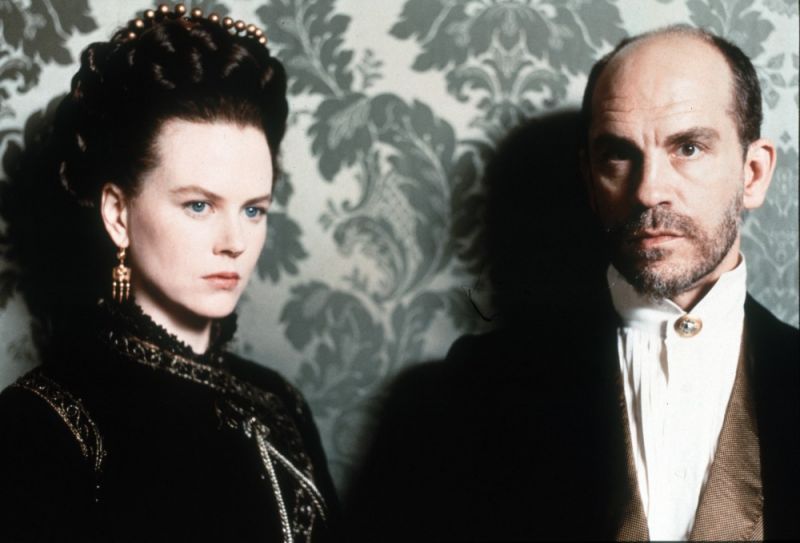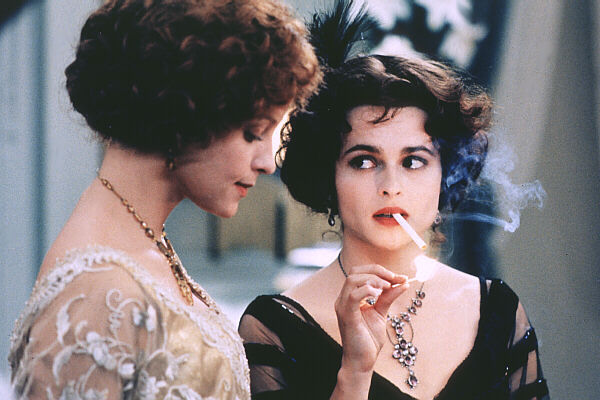WARNING: This post includes spoilers for both The Wings of the Dove and The Portrait of a Lady.
Although James published Wings (1902) twenty years or so after Portrait (1881), the two plots are extraordinarily similar. A greedy woman and her lover/fiancé conspire for him to get close to, and eventually marry, a rich American heiress, in order that they might both have access to the money. In Portrait, the 'Lady' of the title, Isabel Archer, is the victim of this scheme, only realising exactly how cruelly she has been treated towards the end. Similarly, Milly Theale, the young American in Wings, upon realising that Merton Densher's attentions are motivated by money, not affection, experiences intense despair, "turn[s] her face to the wall," and succumbs to the illness which has threatened her life throughout the book.
James's preoccupation with the figure of a genial, intelligent, rich young woman suffering at the hands of others can be explained in biographical terms, especially as regards Wings. The character of Milly Theale is based on his young cousin, Minny Temple, who died of tuberculosis in her mid-twenties, in 1870. James was open about his interest in the immense potential that had been lost, and the strange fact that his affection for her increased after her death (as Merton Densher's does in the novel). The qualities of Isabel Archer and Milly Theale -- both are good-humoured and almost universally liked -- reflect the author's very personal feelings towards the young woman who inspired them.
It's interesting to reflect that, despite the similarities in the two characters and plotlines, it is only Isabel Archer, not Milly Theale as well, who has become the most famous and beloved of James's protagonists. And, despite my using the word 'recycling' in the title of this post, the two novels don't feel at all similar to read. This is partly because James's prose is extremely dense, though rich and expert, in Wings and comparatively light and fluid in Portrait -- but it is also because of a couple of key structural differences in the novel:
 |
Nicole Kidman and John Malkovich
|
By contrast, Wings is mostly from the points of view of the couple, Merton Densher and Kate Croy, with only a few chapters entirely from Milly's. Towards the end of the novel, we follow Densher almost exclusively, which means we become more interested in his moral crisis than in Milly's cruel situation. Gilbert Osmond in Portrait has no such obvious crisis, and so the moral dynamics of Wings are far subtler.
 |
Alison Elliott and Helen Bonham-
|
For an author to kill off a main character is commonplace, sometimes even necessary, to turn up the emotional volume, to raise the stakes. (The deaths of increasingly important characters in the Harry Potter series is a particularly apt example.) But to keep the reader at such a frustrating distance from it, as James does, is phenomenally brave. James is choosing not to cash in on the tear-jerking moments, and implicitly argues that Densher's experiences are more interesting at this point. The difficulties he had in getting the book serialised, ironically, helped him here, enabling him to revise the book and structure it more freely. He chastises himself in the Preface for making Milly's background so scanty -- we know next to nothing about her life in America, for instance -- but the fact that we don't get to be in the room with her at her most crucial, devastating moments is surely deliberate.
3. Milly's illness. At the start of Portrait, Isabel Archer is healthy and happy and determined to have an interesting, full life. Milly takes a similar attitude, but it is given an edge of desperation by the fact that, as is slowly revealed, she knows that she is ill, and suspects that it might be very serious. The fact that the illness is never named, and that she only shows her weakness by her absence at various social engagements -- when she is present, she is vivacious and charming -- intensifies our sense of this threat through James's, and Milly's, teasing. The reader develops a creeping awareness that Milly will not find the happiness she deserves.
Isabel Archer, on the other hand, has no such doom hanging over her head. You feel that she could make a good decision, with enough perspicacity, and find a mode of living that would really suit her. But she doesn't. She marries Gilbert Osmond, and then stubbornly refuses to take any steps to lessen her own misery (until the ambiguous ending). She is complicit in her own downfall, whereas Milly makes no obvious false steps, and is simply the victim of others' schemes.
That this should lead to Isabel becoming such a cherished protagonist is surely natural, considering that she takes her place amongst Dorothea Brooke, Tess Durbeyfield, Elizabeth Bennet and so on, heroines who suffer long and hard (with or without a happy ending) because of a simple error of judgment. We like characters who make mistakes. Milly Theale is likeable, and her situation is tragic, but she is perhaps just too nice for us to get a handle on her -- compared to Merton Densher, who feels the weight of his own guilty profoundly by the end.
The Wings of the Dove takes a while to decide on its protagonist, but the sense of satisfaction I found at the end, when Densher rejects the money Milly has left him and dismisses the success of their scheme, proved to me that Henry James's choice to go back to the plot of Portrait, rearrange things a bit, and thus find a whole new area of fictive potential, is yet more evidence of a bold, masterful writer.


No comments:
Post a Comment